ELAR 4.10(D)
describe how the author's use of imagery, literal and figurative language such as simile and metaphor, and sound devices such as alliteration and assonance achieves specific purposes;
- Free Plan
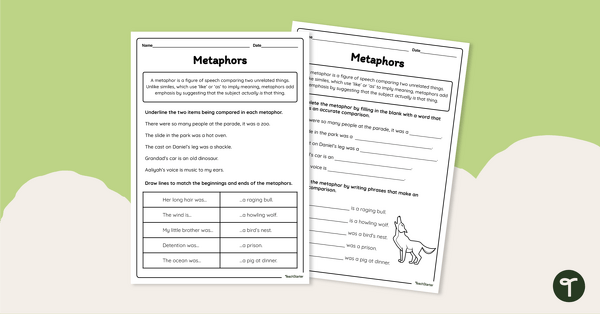
Metaphors Worksheet
Practice identifying and using metaphors with this differentiated metaphors worksheet.
- Free Plan
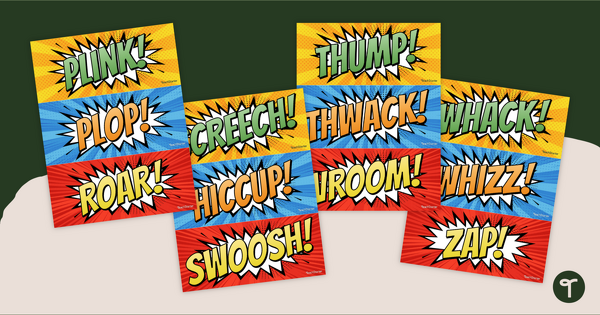
Onomatopoeia Words - Vocabulary Display
Display a fun onomatopoeia word wall in your classroom with printable cards containing onomatopoeia examples.
- Free Plan
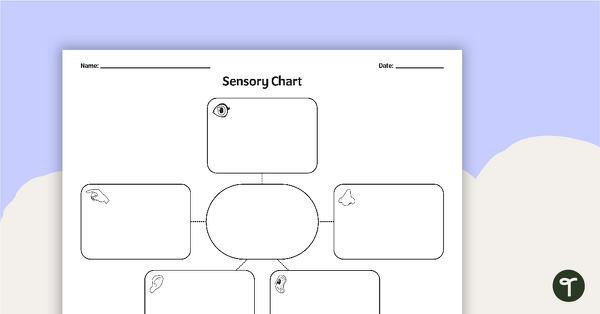
Sensory Chart Graphic Organizer
A graphic organizer for students to use when categorizing sensory details.
- Plus Plan
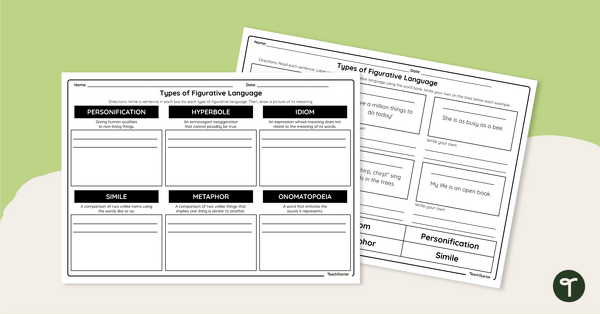
Types of Figurative Language - Worksheet
Practice identifying and creating examples of figurative language with this printable worksheet.
- Plus Plan
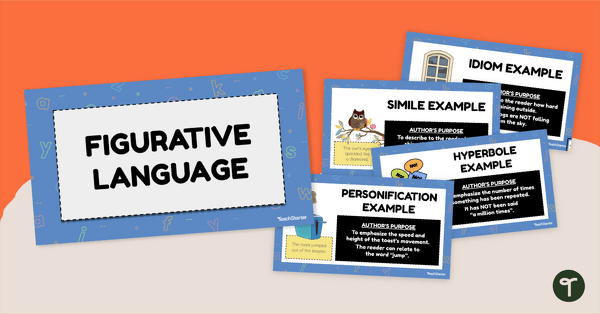
Figurative Languages Lesson - Slide Deck
Teach figurative language using our comprehensive instructional slide deck and accompanying activities.
- Plus Plan

Writing With Alliteration Worksheet
Identify and create alliteration patterns in texts.
- Plus Plan
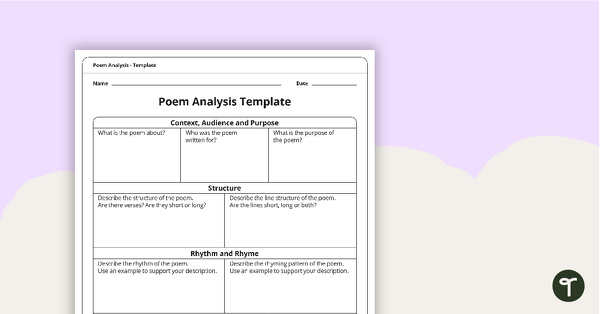
Poetry Analysis Template
A template for students to use when analyzing a poem.
- Plus Plan
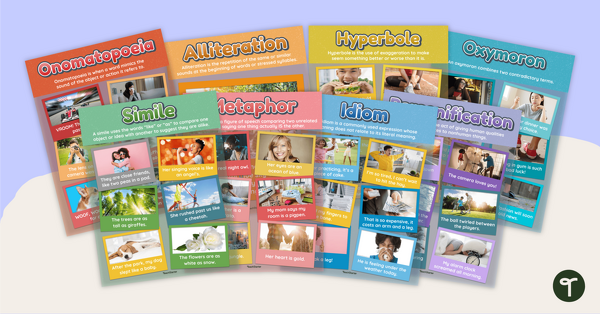
Figurative Language Anchor Charts
Display the types of figurative language with a set of printable figurative language anchor chars.
- Plus Plan
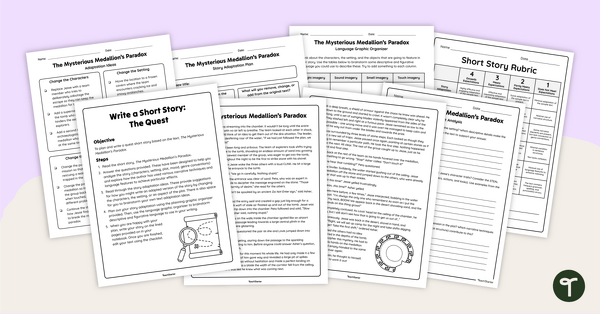
Write a Short Story – The Quest
Get your students analyzing and writing a quest story with this engaging and fully scaffolded writing project booklet.
- Plus Plan
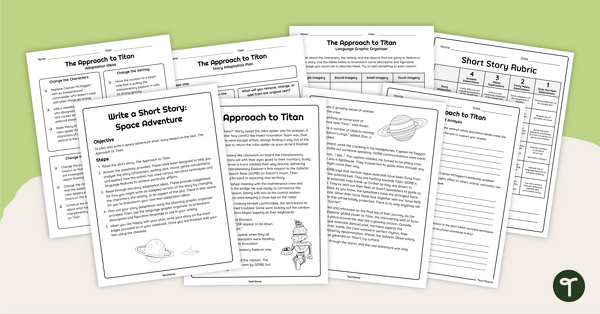
Write a Short Story – Adventure in Space
Get your students analyzing and writing adventure in space stories with this engaging and fully scaffolded writing project booklet.
- Plus Plan

Roll and Find – Figurative Language Worksheet
Explore, identify and interpret figurative language with this engaging roll and find activity.
- Plus Plan
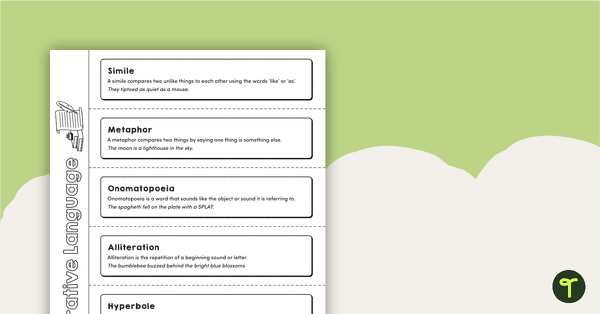
Figurative Language Flip Book
Practice identify examples of figurative language with this flip book template for kids.
- Plus Plan
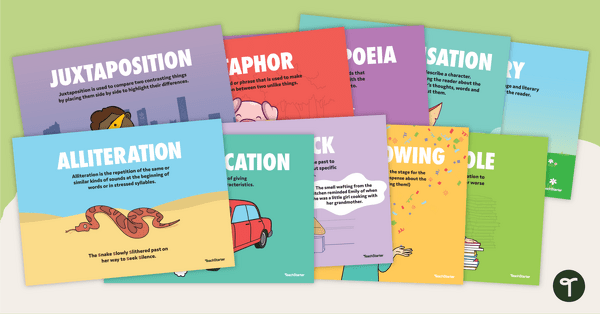
Literary Devices Posters
Explore the various literary devices used by authors with the set of colorful classroom posters.
- Plus Plan
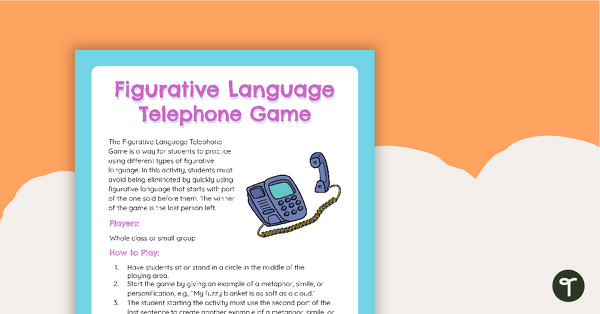
Figurative Language Telephone Game
Play this figurative language game with a group to practice recognizing and inventing metaphors, similes, and personification.
- Plus Plan
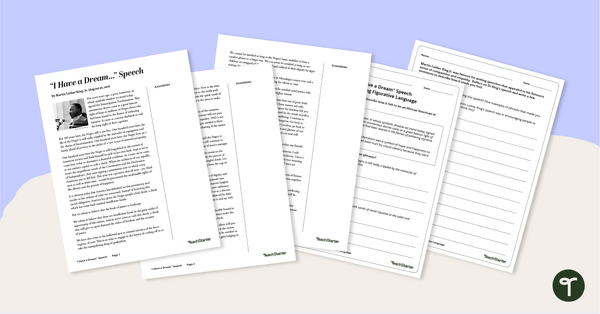
I Have a Dream - Speech Analysis Activity
Review MLK's "I Have a Dream" speech text and explore the metaphors he used to convey his message through the accompanying questions.
- Plus Plan
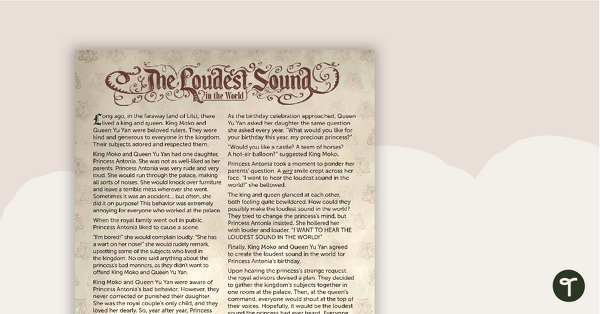
Write a Short Story – The Tale of Transformation
Get your students analyzing and writing a story with a lesson with this engaging and fully scaffolded writing project booklet.
- Plus Plan
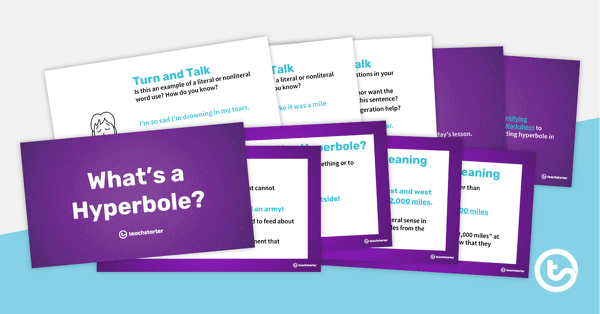
What's a Hyperbole? PowerPoint
An editable 20-slide PowerPoint to use when teaching your students about hyperbole.
- Plus Plan
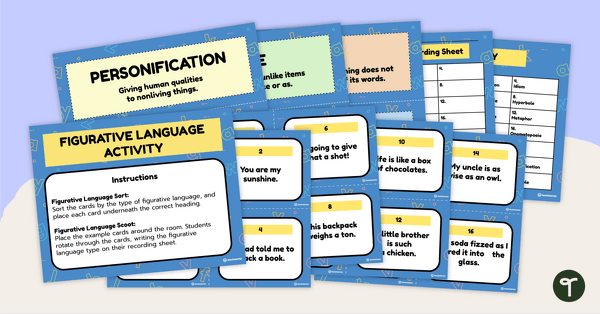
Figurative Language Sorting Activity
Explore figurative language in context with this set of 28 sorting cards.
- Plus Plan

What Does It Really Mean? - Hyperbole Task Cards
Identify and interpret hyperboles used in sentences.
- Plus Plan
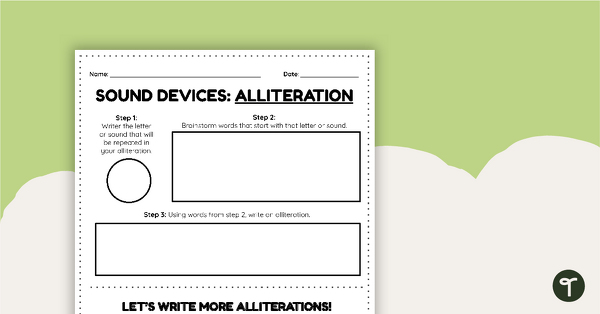
Alliteration Brainstorming Template
Use this brainstorming template to practice using the sound device alliteration.
- Plus Plan
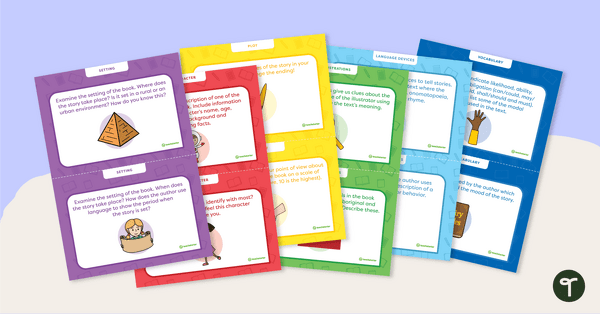
Literary Element Task Cards - Upper Elementary
Explore the wonders of children's literature with this set of 14 literature study task cards for upper elementary students.
- Plus Plan

Onomatopoeia Poems Poster and Templates
Use this onomatopoeia poem poster and accompanying template to teach your students how to write an onomatopoeia poem.
- Plus Plan
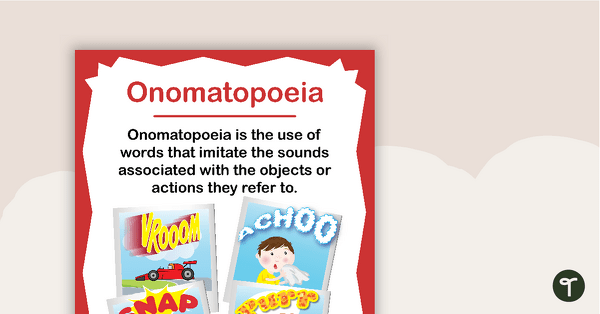
Onomatopoeia Poster
A poster providing a definition and examples of onomatopoeia.
- Plus Plan
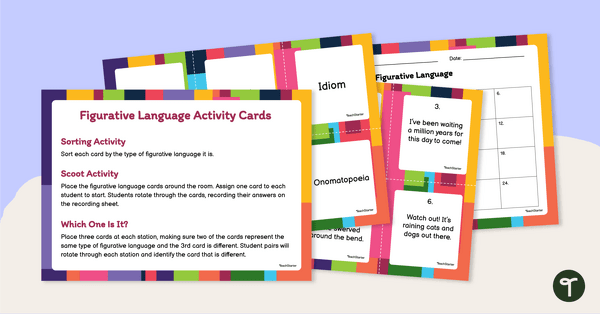
Figurative Language - SCOOT! Task Cards
Explore figurative language in multiple ways with the set of 24 task cards.
- Plus Plan
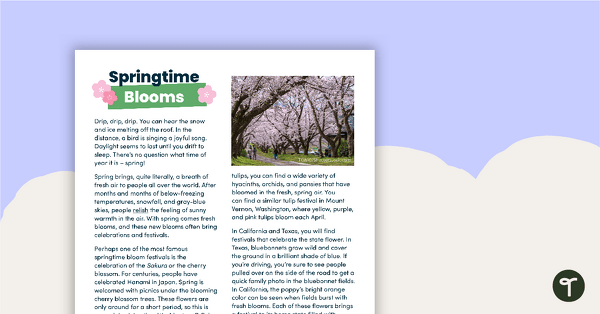
Springtime Blooms – Comprehension Task
An article about springtime blooms and festivals paired with a comprehension task.
- Plus Plan
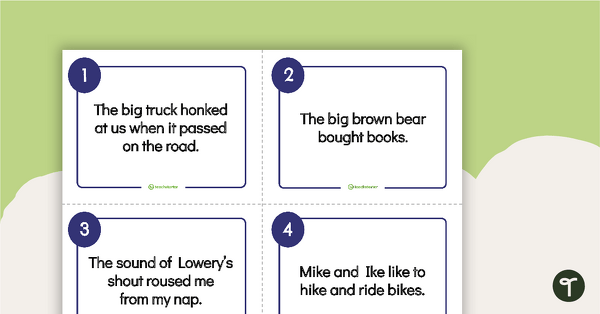
Sound Devices Sorting Activity
Reinforce sound devices used in text by sorting 16 poetic device cards into their appropriate category.
- Plus Plan
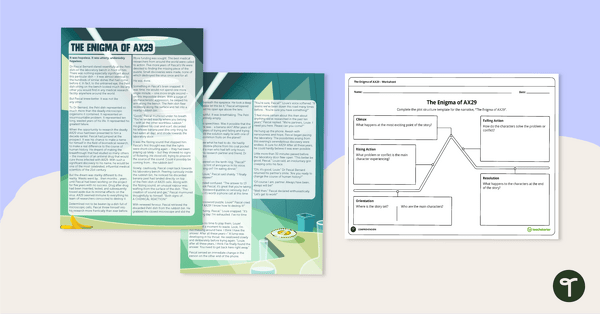
Write a Short Story – The Discovery or Invention
Get your students analyzing and writing an invention story with this engaging and fully scaffolded writing project booklet.
- Plus Plan
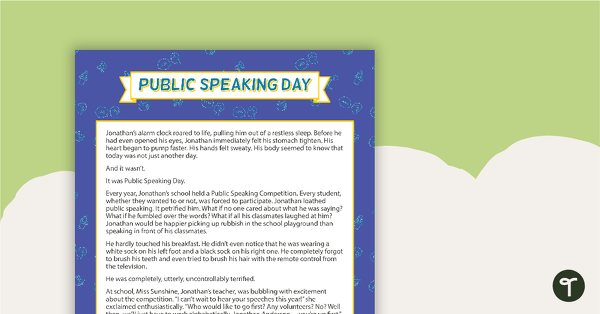
Write a Short Story – Overcoming Obstacles
Get your students analysing and writing overcoming obstacles short stories with this engaging and fully scaffolded writing project booklet.
- Plus Plan

Interpreting Figurative Language - Worksheets
Explore figurative language in poetry with this age-appropriate poem and accompanying vocabulary questions.